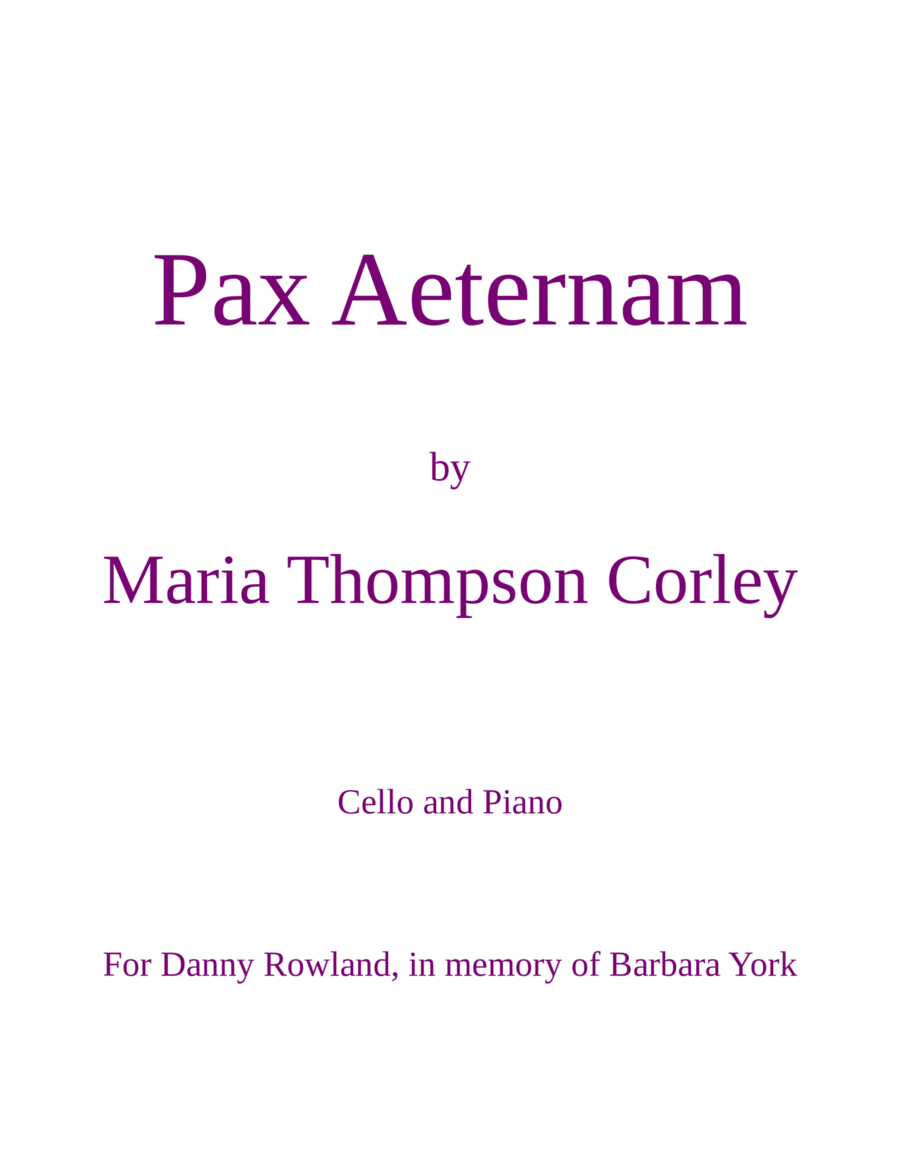Cello,Piano - Level 3 - Digital Download SKU: A0.1252822 By Maria Thompson Corley. By Maria Thompson Corley. Arranged by Maria Thompson Corley. 21st Century,Sacred. Score and part. 9 pages. Maria Thompson Corley #846622. Published by Maria Thompson Corley (A0.1252822). âPax Aeternamâ was written in memory of renowned composer Barbara York, a fellow Canadian whom I was blessed enough to meet in person through my interaction with Matt Brown. Though we connected many years into my collaborative piano career, Matt is the first tubist I ever worked with, and Barbaraâs music was my favorite part of getting introduced to the tuba literature. I was thrilled to learn how much she appreciated my playing of her work.âHow Beautifulâ was written in memory of Mattâs son Eli, who had a congenital condition that took his life a few hours after he was born. This flawless piece of music, poignant yet never maudlin, provided the title for a recording Matt and I did of all of Barbaraâs tuba output. It also threw down the gauntlet when Danny Rowland approached me, at Mattâs suggestion, about composing a piece. Danny mentioned loving âHow Beautiful,â and intending to commission Barbara, whoâd recently passed on. Iâd never written for the tuba before, but felt absolutely no pressure. Thatâs a lie.Like âHow Beautiful,â âPax Aeternamâ is in a major key; in my case, I wanted to evoke wistfulness rather than despair. Barbaraâs path was full of suffering, and having lost a brother to prolonged illness, Iâve come to embrace the idea that death can be a sweet relief from pain. I tried to capture some of Barbaraâs spirit, particularly in the middle section, and chose triple meter to give the outer sections a bit of âswing.â I donât recall Barbara as a somber person, and I wanted to paint a portrait of someone who moved through life with a smile. I didnât know her as well as many, but I always found her kind, generous, and unpretentious. I hope that this musical portrait does her justice.I created a cello transcription for a performance with Sara Male, my partner in Duo Chiaroscuro. This seemed appropriate, since âStill Waters Running Deep,â one of our signature pieces, is a transcription of the slow movement of Barbaraâs bassoon sonata, created at our request by the composer.
